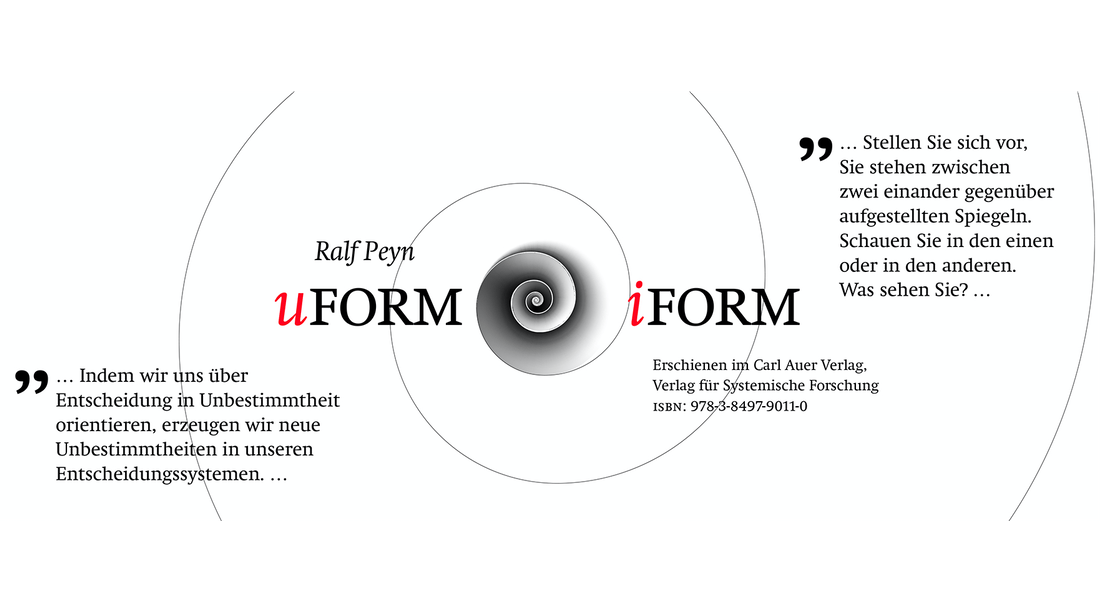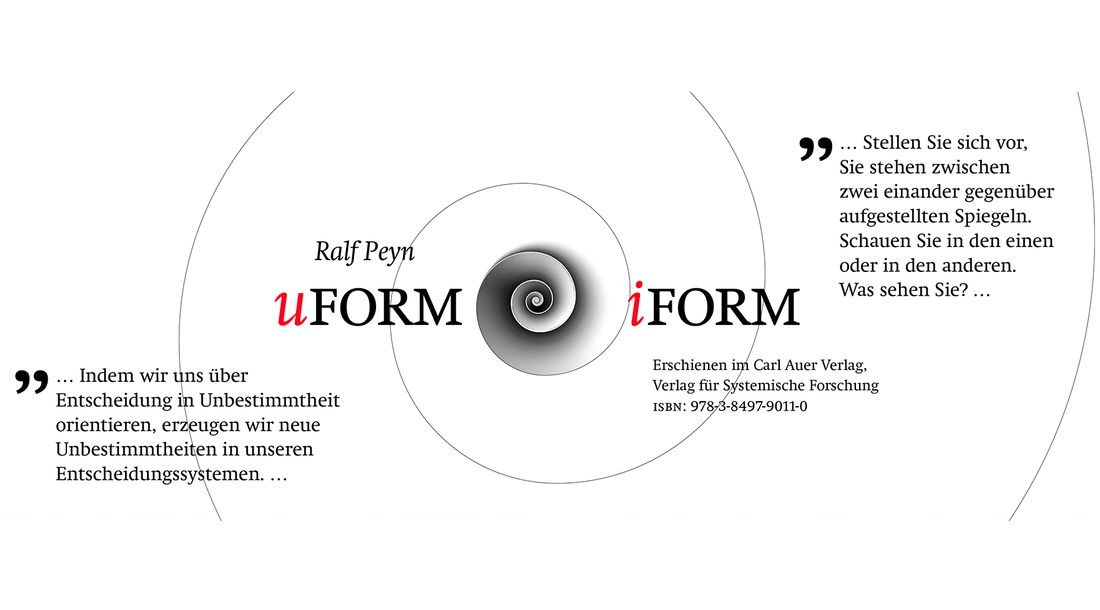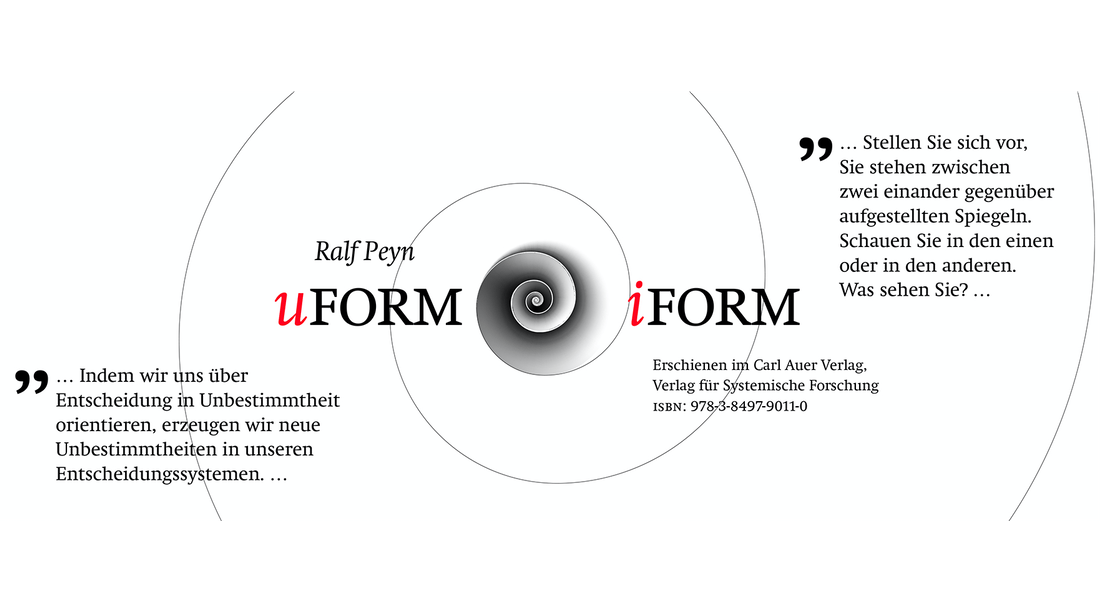How does System function/operate 3

If you are interested in Systems, Cellular Automata, Universal Turing-Machines, Systems Theory, Complex Systems Theory etc. and you haven’t read about Ralf Peyns work uFORM iFORM and SelFis before, you should read these two articles:
How does System function/operate?
How does System function/operate 2
Ralfs latest experiment,
decisionFORMs, lifeFORMs, mindFORMs
is another fascinating product of this new kind of science.
Let me quote to you something from uFORM iFORM to help a little bit with what you are about to learn:
If we want to comprehend systems we have to explore them with systems. With SelFis we can illustrate the history of the states of a system. We can simulate various scenarios of development. We can analyse the self-determination and evolution of decision-systems/distinction-systems. We can learn to create sensible expectations concerning the probabilities of realization of specific processes and operations. We can try to anticipate the measuring possibilities of systems.
SelFis demonstrate (in their one-dimensional evolution) universal attributes of self-referential systems.
And decisionFORMs, lifeFORMs and mindFORMs illustrate specifically (in their two-dimensional evolution) attributes of autopoietic, autonomous and autarkic systems!
Here are two videos for you to watch decisionFORMs and lifeFORMs constructed with the triple-selective decision-system 100101. It is one of 64 decision-systems composed out of these FORMs:

But first read this article in full to understand more about what you are seeing there:
- If you look closely, you see a grid. Imagine every square, black or colored, as one FORM.
- Imagine the whole grid as two entwined cylinders or, if that is too complicated for you, as a sphere.
- Imagine this sphere as a self-referential system.
- Whatever you see, don’t concentrate merely on the changes but comprehend the changes you see as product/result of decision-making-processes of the whole system.
- Try to see the changed FORMs as systems and their surroundings/Umwelt/environment, then again try to see everything as one system.
- Black FORMs are empty FORMs.
- Blue FORMs are marked FORMs.
- Red FORMs are undetermined FORMs.
- Green FORMs are imaginary FORMs.
- From the moment the program starts running, the system checks continuously the following:
- Does the FORM have two neighbours?
- Does the FORM have three neighbours?
- In case the cell or FORM has two neigbours it keeps its FORM.
- In case the cell or FORM has three neighbours, it re-FORMs itself on the FORMs of its neighbours.
- In any other case it empties itself.
Here are some properties of such systems which they have in common with living systems:
- The element constitutes itself (as system/FORM) in the system as context (on multiple complexes).
- The system exists as relations between its elements.
- The system can only have an effect on the constitution of its elements as a whole (multicausality).
- The system has no access to the (self-)construction-FORM(s) of its elements.
- (Sub)Systems are organizing themselves in (System)Umwelt/environment/surroundings.
- (Sub)Systems are organizing themselves autopoietically, autonomously and autarkically.
- They form a border to their Umwelt/environment(s)/surroundings.
- Some of them move in a specific direction through their surroundings: the gliders.
- Gliders adapt to themselves and their surroundings, as long as the surroundings don’t become too complex: on such obstacles they re-organize themselves or they become rigid or they dissolve.
- The elements observe their closest environment.
- They (in this model) do not/can not observe themselves as (sub)systems in Umwelt(system).
- The movement/organization of the FORMs produces/FORMs itself as emergent phenomenon (on the stable matrix of the cells/elements of the system(s)).
- Some of these (sub)systems operate self-preserving and self-changing.
- Structural and organisational changes are not pre-determined by linear calculations. The self-FORMing/self-organization emerges in the interaction of cells and movement happens, emergent on the surface of the system.
Start with video 1, 100101decisionFORMs.
See how each time a new decision-process starts a task is given and how the system begins its very own original and individual solution-finding process. Each process is a solitaire.
I enjoyed especially the sequence starting at min. 12:29. With some of these FORMs I instantly empathized and became engrossed in the match: will they become rigid? will they dissolve? will they survive and why?
Take your time. Try to see the gliders (those FORMs wandering through their surroundings), try to comprehend what you see.
Think about: social systems, thought-processing, life-forms, natural phenomena …
Have fun!


